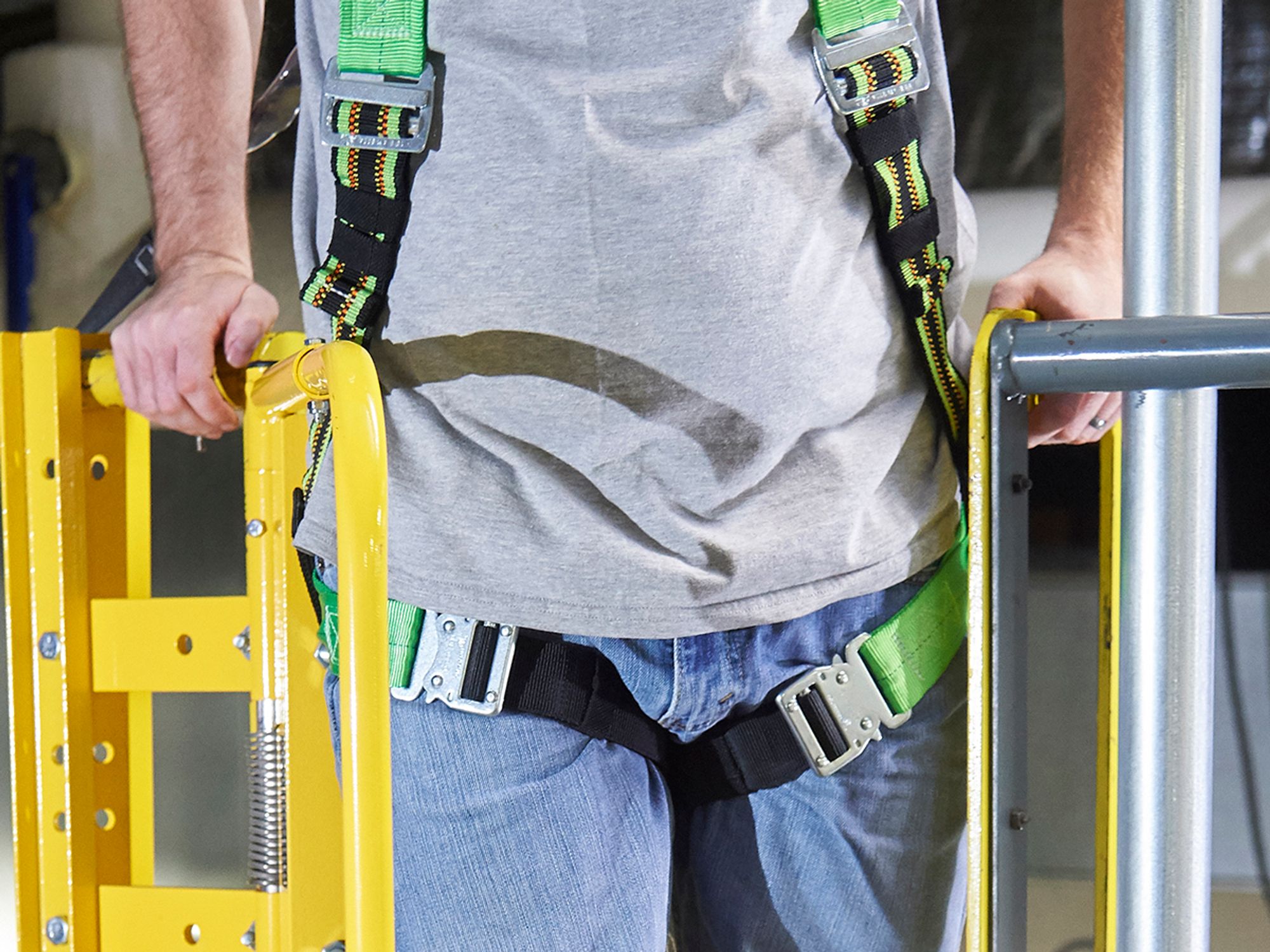Protect workers from holes and openings

- Employers must protect employees from the risk of falling through or into holes at the worksite.
- Types of holes may include skylights, stairway floor holes, ladderway holes, hatchways, and chutes.
The Occupational Safety and Health Administration (OSHA) requires employers to protect employees from falling through holes, including skylights. Holes less than four feet above a lower level need to be protected by a cover or guardrail system. When holes are four feet or more above a lower level, options include the following:
- Covers
- Guardrail systems
- Travel restraint systems
- Personal fall arrest systems
Stairway floor holes must use guardrail systems on all exposed sides, except the side at the stairway entrance. One exception is if the stairway hole is used less than once a day and is in cross traffic, the employer may use a hinged hole cover and removable guardrail system that protects on all sides except the stairway entrance.
Ladderway floor holes or ladderway platform holes must be protected by a guardrail system and toeboards, except at the entrance of the ladder, where a self-closing gate or offset is required.
Hatchways and chutes must be protected by one of the following:
- A hinged floor-hole cover and a fixed guardrail system that leaves only one exposed side. When not in use, the cover must be closed or a removable guardrail system provided on the exposed sides.
- A removable guardrail system and toeboards on not more than two sides of the hole and a fixed guardrail system on all other exposed sides. The removable guardrail system must be kept in place when the hole is not in use.
- A guardrail system or a travel restraint system when a work operation necessitates passing material through a hatchway or chute floor hole.
An opening is a gap or open space in a wall or vertical surface that is at least 30 inches high and 18 inches wide, through which an employee could fall to a lower level (such as a chute, window-wall, or temporary wall opening). Employers must ensure that each employee near an opening, including one with a chute attached, is protected by a guardrail system or other fall protection.
Fall protection is required when the bottom edge of the opening is less than 39 inches above the walking-working surface and the outside bottom edge of the opening is four feet or more above a lower level. Fall protection is not required when the bottom edge of a wall opening is 39 inches or more above the walking-working surface.
Employers are not allowed to use designated areas to protect employees from openings.
